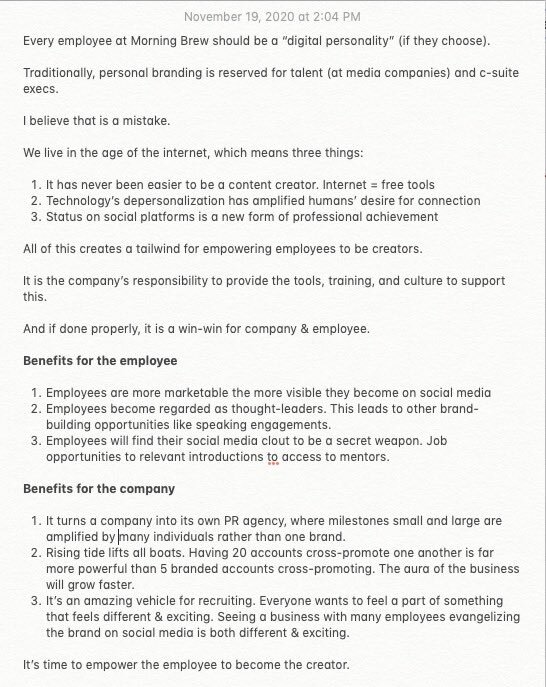Paint Videos Cause a PR Nightmare
There are two types of companies—those that innovate and those that don’t. Innovation isn’t a guarantee of success. But lack of innovation is a guarantee of failure.
When people think of innovation. They usually think of technology innovation. An obvious example is Apple’s invention of the iPhone in 2007. It wasn’t just an invention, that changed Apple. It changed the world:
Everyone with an iPhone had access to the internet in our pocket
Everyone iPhone user became an amatuer photographer
A whole new job category was created overnight—app developer
13 years later, Apple is now the most valuable company in the world valued at ~$2T.
Innovation creates a ripple effect. Change you can't imagine.
But innovation isn’t just about technology. There are plethora of ways companies can innovate without disruption.
For example, business model innovation. In 1997, a company called Netflix was started. It was an online store for DVD rentals. Its technology wasn’t the underlying innovation. Instead it was its business model. It’s biggest competitor, Blockbuster, relied on a retail model. It had nearly 9,000 stores across the globe. Netflix didn’t have any stores. It’s business model relied on shipping DVDs across the country. Today, Netflix is worth ~$210B and Blockbuster is bankrupt.
Innovation is important for large and small companies. One day you’re company could be on top of the world. The next day, you’re a non-entity. Figuring out how to reinvent your iconic photography brand as a pharma manufacturer (Kodak for the win).
Another area of innovation is employee innovation. Employee innovation is important because employees are the lifeblood of a company. Herb Kelleher, the former CEO of Southwest Airlines, said:
"In business school, they'd say, ‘This is a real conundrum: Who comes first, your employees, your shareholders, or your customers?' My mother taught me that your employees come first. If you treat them well, then they treat the customers well, and that means your customers come back and your shareholders are happy."
Well apparently Sherwin Willams missed that memo. Last week, Sherwin fired part-time employee, Tony Piloseno. Tony ran the TikTok account, @tonesterpaints. He earned 1.4M followers who watched him mix paint (yes, I'm serious). His videos are pretty addicting.
Tony started the account in December 2019. He went viral immediately. A few months later he saw an opportunity. Sherwin Williams could use TikTok to market to Gen-Z. His manager loved the idea. His manager connected him to the corporate marketing department of Sherwin Williams. He emailed them a few times. He even LinkedIn them. He finally heard back ... two months later. They said no thanks.
A month later he was fired. The official reason was "using work hours to make TikTok videos".
Now compare this to another company I wrote about a few weeks ago—Ocean Spray:
"When I open the app [TikTok] I see a video of a man, Nathan Apodaca, riding a skateboard. He's drinking Ocean Spray Cranberry Juice and lip syncing the song Dreams. His video has 23.5M views. This number doesn’t include the millions of views on other platforms such as Twitter. It has also sparked a wave of parodies."
Ocean Spray embraced their virality. The CEO went on TikTok. Ocean Spray even bought Mr. Apodaca a car. The public loved it and is still talking about it. Ocean Spray went from go-to bladder drink to Gen-Z's favorite juice.
Instead, Sherwin Williams took the "shoot ourselves in the foot" approach. Fire the employee. Fire an employee who wanted to make the company a better place. Fire an employee who found a new way to market Sherwin Williams paint. As one person tweeted:
"Firing the Sherwin Williams guy is like Ocean Spray sending the skateboard dude a cease and desist."
The incident has now turned into a PR nightmare for Sherwin. Thousands have criticized the decision on social media.
But this isn't just about Sherwin William or even the advent of TikTok as an employee engagement tool. It's about the changing role of employees. 50 years ago, an employee showed up at 9 AM and left at 5 PM. Those days are no more. An employee is much more than that today. An employee can be a referral source for your next hire. An employee can create a TikTok video to make your product go viral. The employee of today is "potentially" an extension of your marketing efforts. If an employee doesn't like their job, they can trash you on social media. Or discourage a friend from working there. The employee relationship is a two-way street.
Morning Brew CEO, Alex Liberman, takes this idea even further. He believes if an employee chooses, that the company should turn their employees into "creators".
(Photo Credit: Alex Lieberman)
Sherwin Williams has a choice. It can embrace innovation or continue to ignore the future. Maybe it'll reinvent itself like Kodak and become a pharma manufacturer. Embrace innovation. Embrace positivity. If an employee is talking positively about your company. It's probably best to embrace it. Figure out how you can empower and innovate. Otherwise, you won't just start losing employees, but your customers. And eventually your company.

